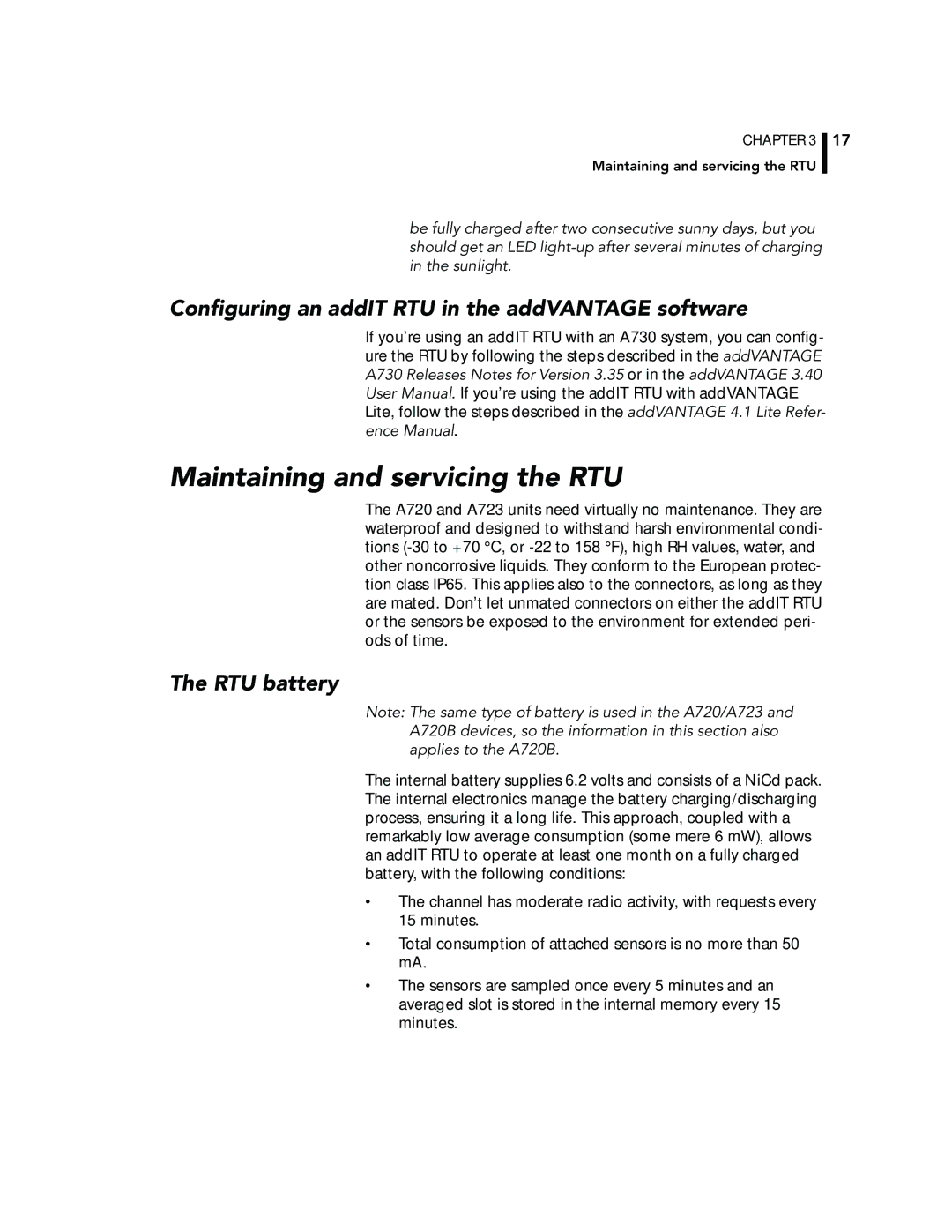CHAPTER 3
Maintaining and servicing the RTU
17
be fully charged after two consecutive sunny days, but you should get an LED
Configuring an addIT RTU in the addVANTAGE software
If you’re using an addIT RTU with an A730 system, you can config- ure the RTU by following the steps described in the addVANTAGE A730 Releases Notes for Version 3.35 or in the addVANTAGE 3.40 User Manual. If you’re using the addIT RTU with addVANTAGE Lite, follow the steps described in the addVANTAGE 4.1 Lite Refer- ence Manual.
Maintaining and servicing the RTU
The A720 and A723 units need virtually no maintenance. They are waterproof and designed to withstand harsh environmental condi- tions
The RTU battery
Note: The same type of battery is used in the A720/A723 and A720B devices, so the information in this section also applies to the A720B.
The internal battery supplies 6.2 volts and consists of a NiCd pack. The internal electronics manage the battery charging/discharging process, ensuring it a long life. This approach, coupled with a remarkably low average consumption (some mere 6 mW), allows an addIT RTU to operate at least one month on a fully charged battery, with the following conditions:
•The channel has moderate radio activity, with requests every 15 minutes.
•Total consumption of attached sensors is no more than 50 mA.
•The sensors are sampled once every 5 minutes and an averaged slot is stored in the internal memory every 15 minutes.
